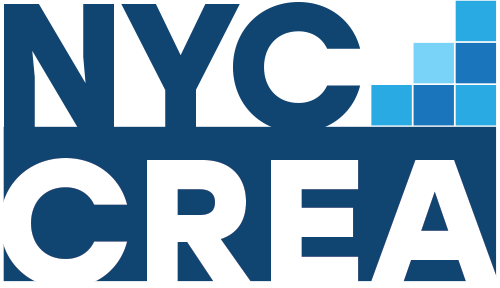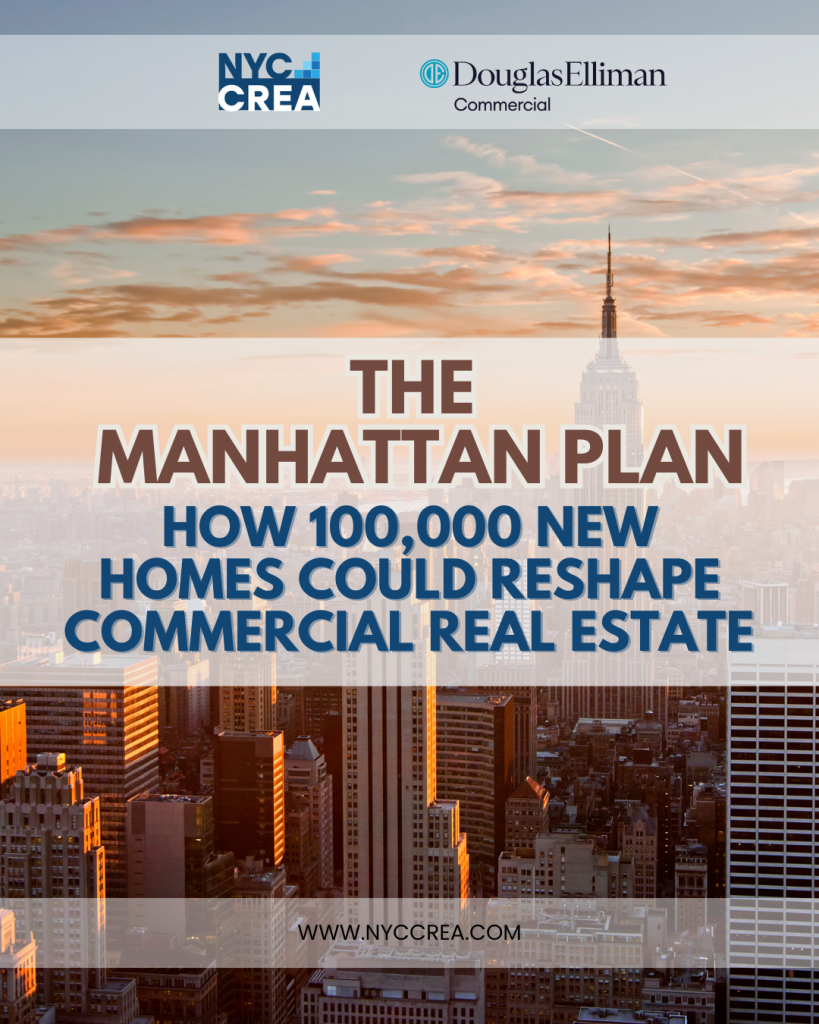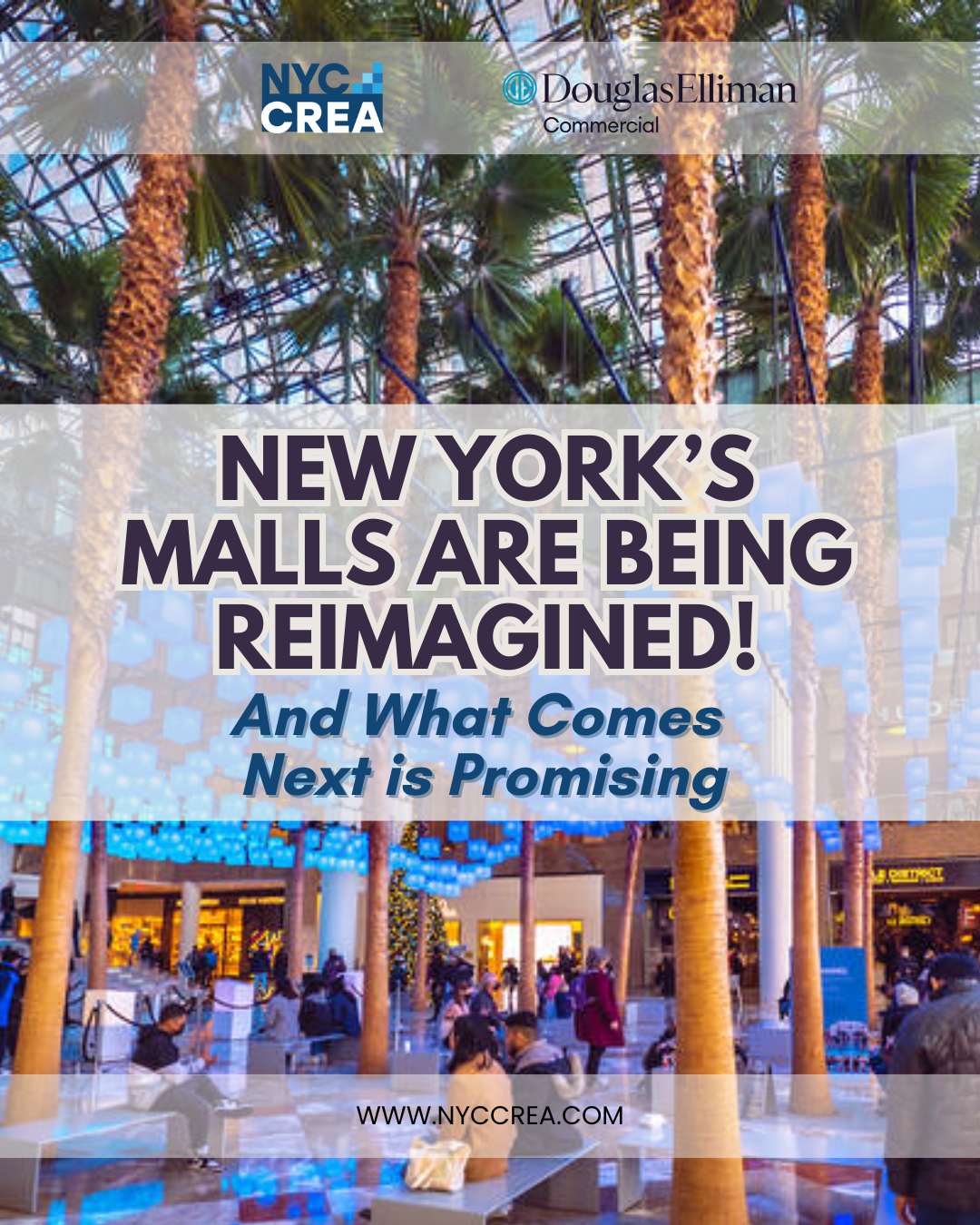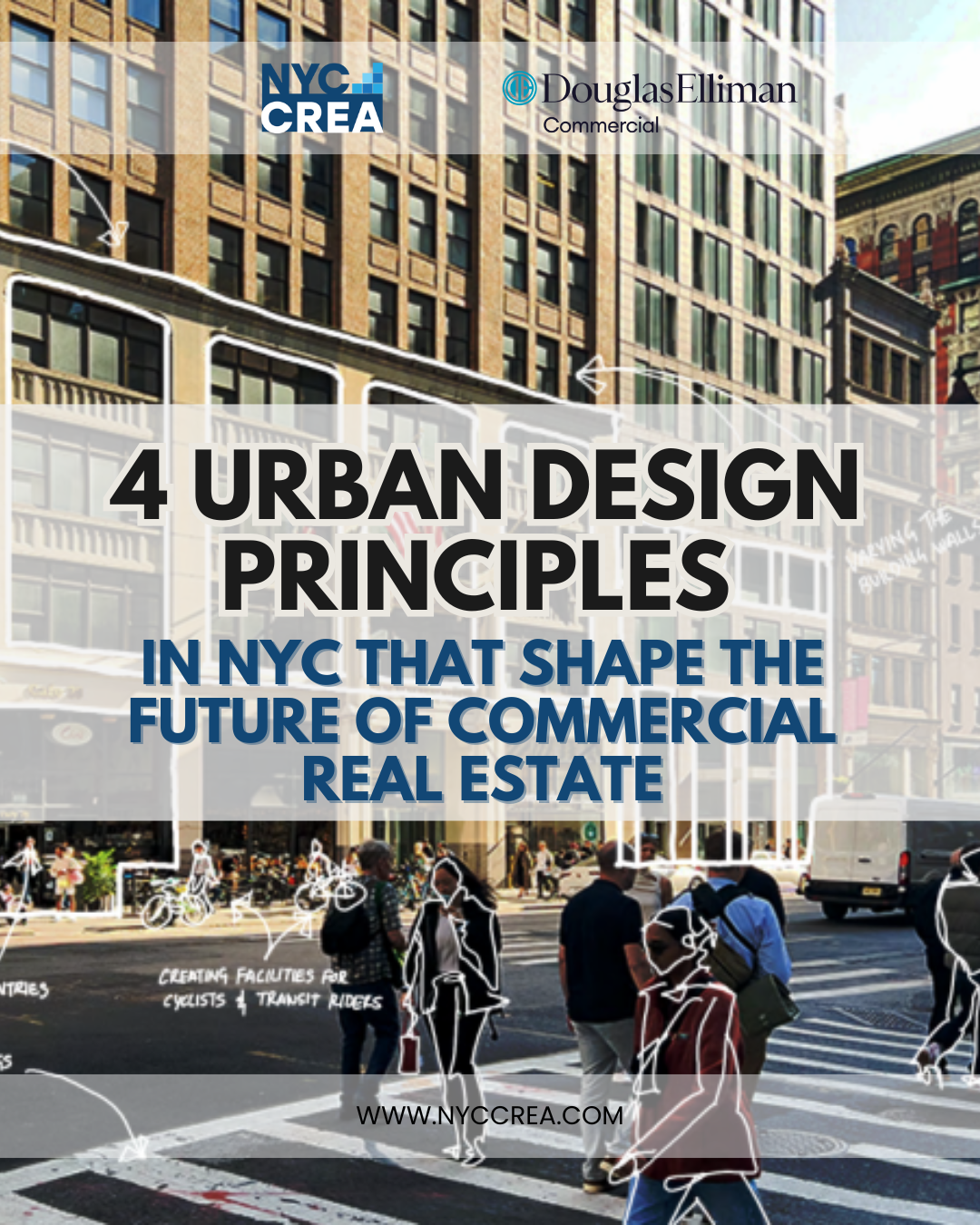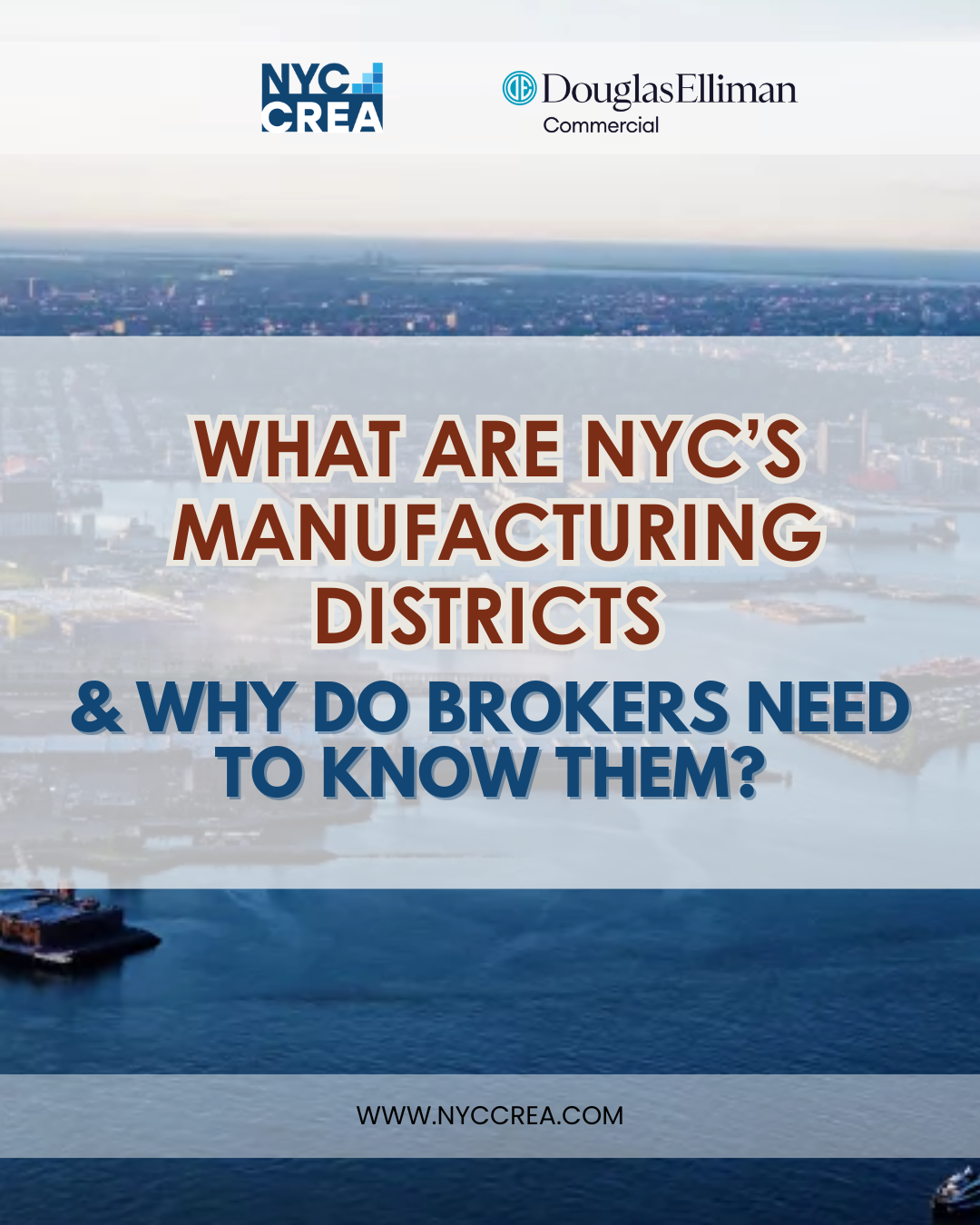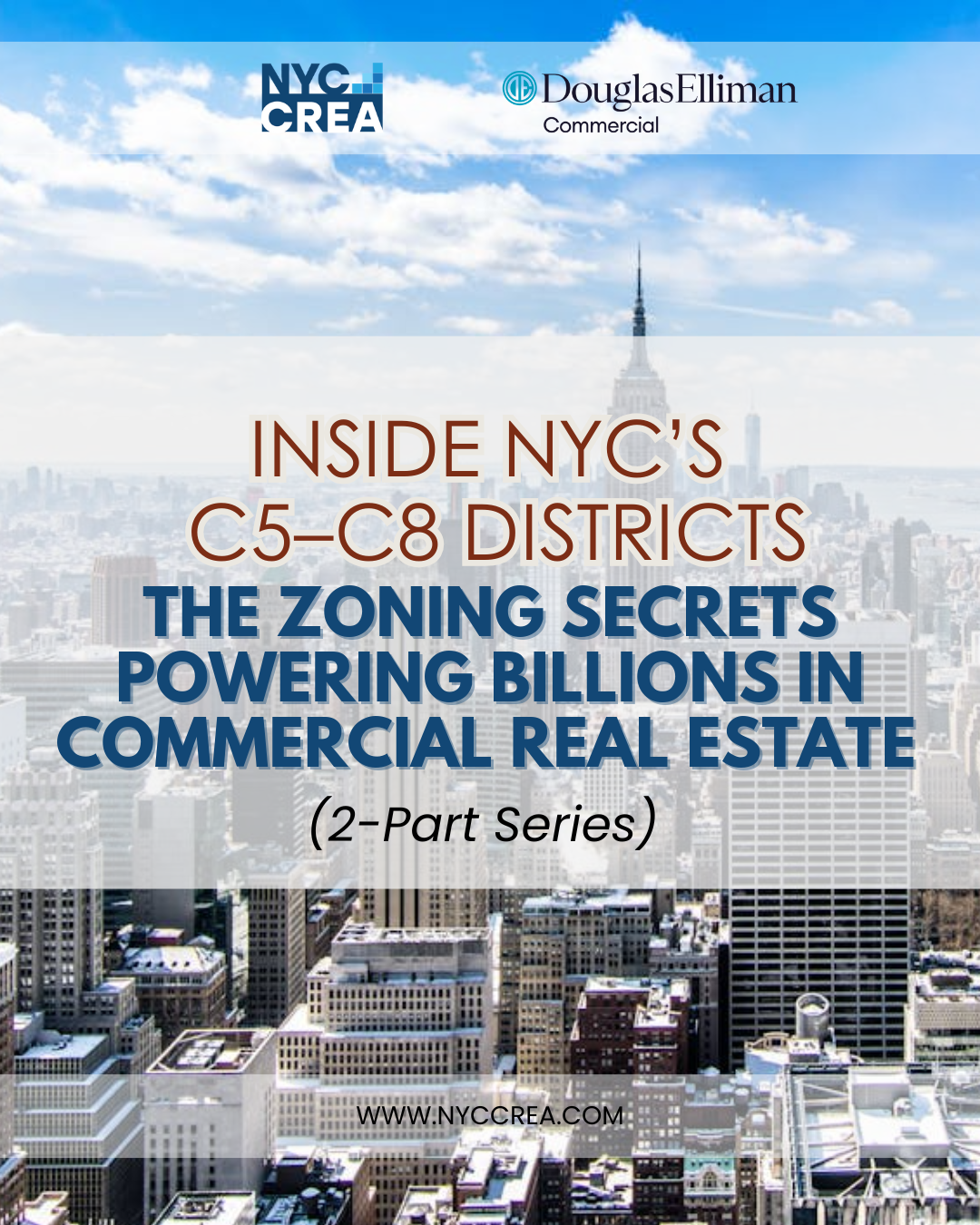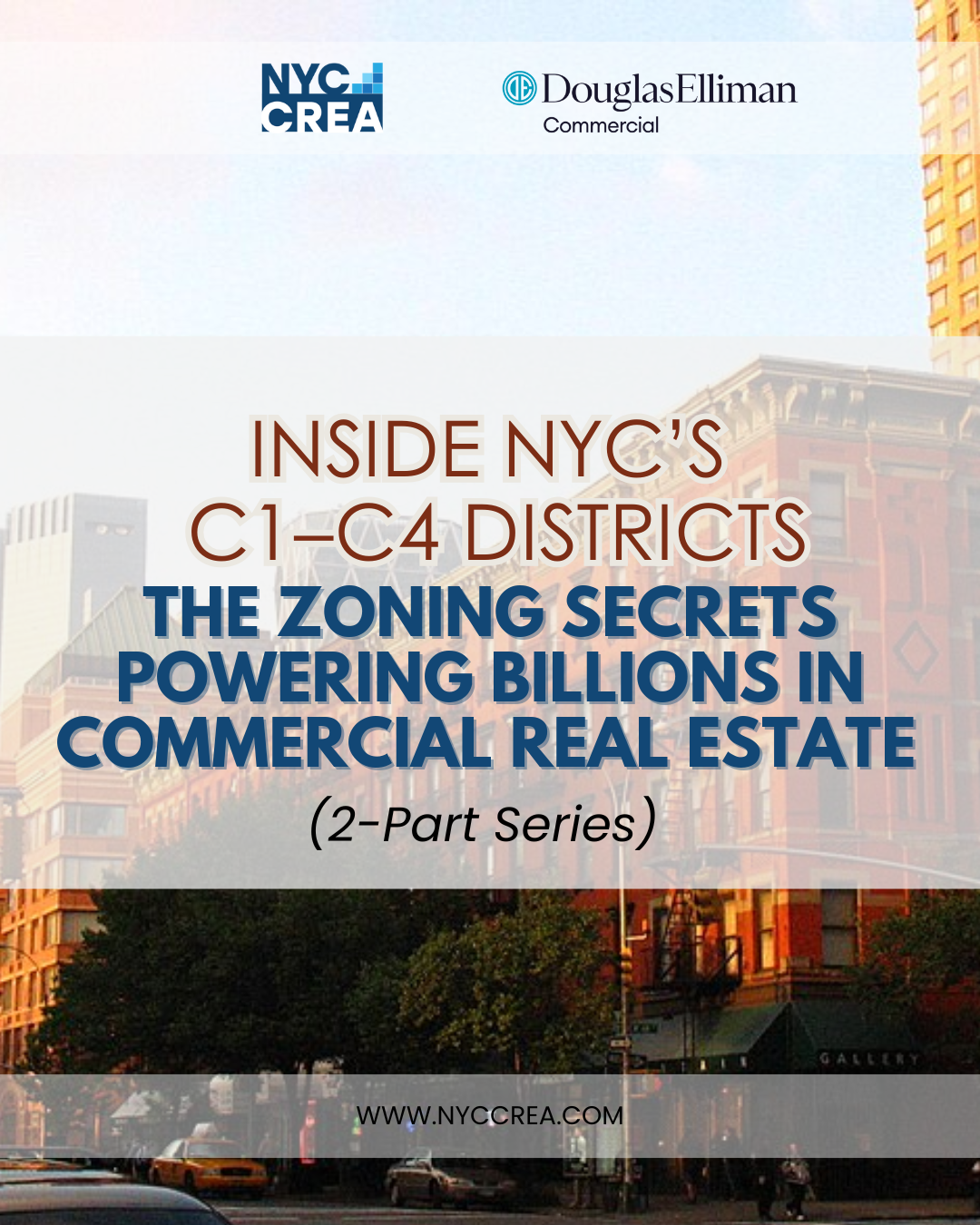October 24, 2025
Key Highlights
- Manhattan’s housing shortage has reached critical levels, with rents up 50% since 2010 and production lagging behind every borough but Staten Island.
- The Manhattan Plan aims to add 100,000 new homes over the next decade through zoning reform, policy innovation, and stakeholder collaboration.
- For the commercial real estate market, this plan signals a new wave of mixed-use opportunities, urban rebalancing, and long-term investment shifts.
As brokers at NYC Commercial Real Estate Advisors (NYCCREA), we’ve seen firsthand how Manhattan’s energy, innovation, and density have long fueled its economy. But lately, that same dynamism has been challenged by one major constraint: housing.
Housing demand continues to far exceed supply. Based on NYC Planning data, from the 1970s through the early 2010s, Manhattan led the city in housing production—but in recent years, that share has dropped dramatically. Between 2021 and 2024, the borough produced less housing than every other borough except Staten Island.
Today, nearly half of Manhattan residents are rent-burdened, and median asking rents are 50% higher than they were in 2010. The vacancy rate sits at just 2.33%—well below the emergency threshold.
In short, the housing crisis isn’t just a residential issue. It’s reshaping where people live, how they commute, and how businesses operate.

The Manhattan Plan
The city’s ongoing Manhattan Plan is an ambitious attempt to reverse decades of housing imbalance by creating 100,000 new homes over the next decade.
Here’s what it sets out to do:
- Unlock Housing Opportunities
Through zoning updates, regulatory reforms, and innovative tools to deliver housing in high-opportunity areas. - Target Strategic Growth Areas
Central business districts, transit corridors, and zoning districts currently restricting residential development. - Encourage Fair Housing and Accessibility
Increase income-restricted and affordable housing, especially through Mandatory Inclusionary Housing (MIH) in high-cost neighborhoods. - Streamline Development Processes
Simplify environmental reviews, permitting, and development approvals to get projects moving faster. - Innovate in Construction
Support new building technologies and explore co-location of housing with public facilities on publicly owned sites.
This isn’t a one-size-fits-all initiative. It’s a borough-specific strategy designed to make growth make sense for Manhattan.
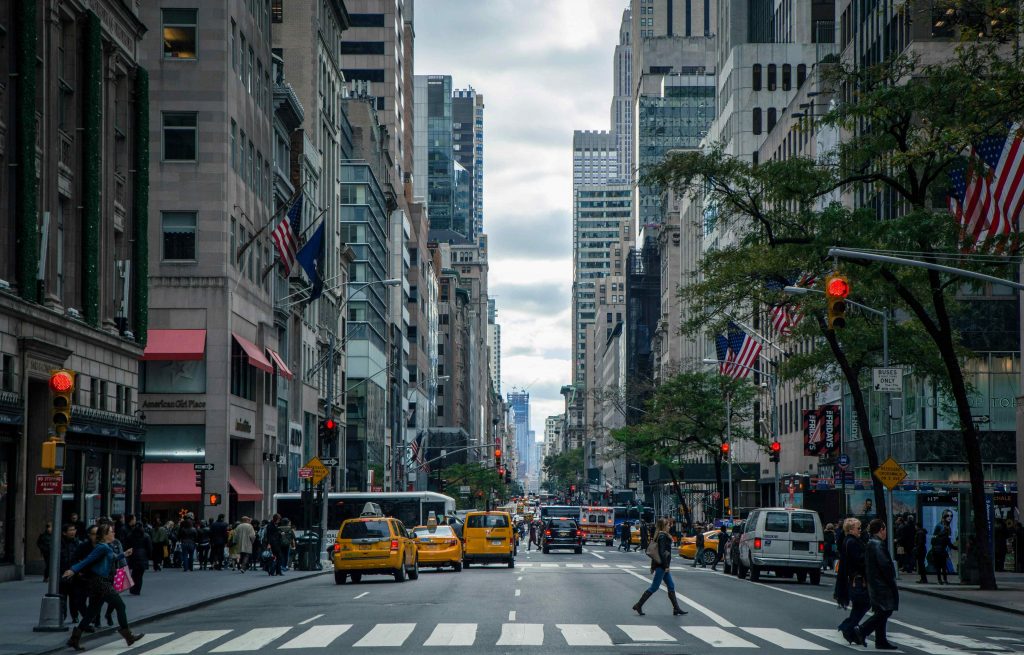
What This Means for Commercial Real Estate
From our perspective at NYCCREA, the Manhattan Plan’s ripple effects on commercial real estate (CRE) could be profound—and largely positive.
Here’s what we’re watching:
- More Mixed-Use Opportunities
Converting underutilized commercial space and restrictive zoning areas into vibrant mixed-use corridors. - Transit-Oriented Revitalization
Expanding housing near major transit hubs could increase retail foot traffic and bolster office corridor vitality. - New Development Synergies
As developers focus on residential expansion, we may see renewed interest in ground-floor retail, amenities, and shared community spaces. - Investment Diversification
The Plan encourages investors to consider hybrid assets—properties that bridge residential, retail, and even light commercial uses. - Stakeholder Collaboration
With the city actively seeking input from property owners, developers, and community leaders, CRE professionals have an opportunity to shape the future landscape.

Our Take: A Rare Opportunity for a Smarter Manhattan
At NYCCREA, we view The Manhattan Plan as a transformational opportunity. The commercial real estate ecosystem thrives when people live, work, and spend locally—and housing is the foundation of that cycle.
While we expect some near-term uncertainty as zoning and regulatory changes roll out, the long-term implications point toward a more balanced, resilient, and interconnected Manhattan.
This isn’t just about adding 100,000 homes—it’s about redefining how the city grows, ensuring that Manhattan remains not just a center of commerce, but a livable, inclusive, and sustainable urban hub for the next generation.
As brokers, we’re ready to help our clients—owners, investors, and tenants—navigate this new landscape with insight and strategy. The opportunity is clear: those who adapt early will lead the next chapter of Manhattan’s real estate story.
For the latest news, proven strategies, and exclusive opportunities in commercial real estate in New York City and Western Nassau County NY, visit us at www.nyccrea.com
FOLLOW US:
Facebook: www.facebook.com/newyorkcityCREA
Instagram: www.instagram.com/nyccrea
LinkedIn: www.linkedin.com/company/nyccrea
